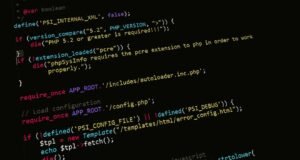Tesla Autopilot Crash
With the rising popularity of self-driving cars, safety concerns have been brought to the forefront. Tesla, a pioneer in autonomous driving technology, experienced a significant setback when one of its vehicles collided with a stationary object while operating on Autopilot mode. This incident has raised questions about the reliability and limitations of Tesla’s Autopilot feature.
Key Takeaways
- Tesla’s Autopilot mode experienced a crash involving a stationary object.
- The incident has sparked discussions regarding the safety and effectiveness of autonomous driving technology.
- Investigations are underway to determine the cause of the crash and any potential design flaws.
**Tesla’s Autopilot mode** allows drivers to hand over control of the vehicle to the car’s advanced software and hardware, which is designed to safely navigate and operate the car in certain situations. However, it is crucial to note that **Autopilot is not fully autonomous**, and drivers are still responsible for maintaining their attention and being ready to take control at any moment.
It is important to highlight that Tesla’s Autopilot has logged millions of miles of successful autonomous driving, **significantly reducing human-error accidents**. This technology has the potential to revolutionize transportation and make our roads safer.
Despite Tesla’s efforts in making Autopilot as safe as possible, accidents can still occur. **The crash involving the stationary object raises concerns about the system’s ability to detect and respond to unexpected obstacles**. Tesla is working closely with authorities to investigate the incident and determine any necessary improvements to the system.
*Autonomous driving technology is at an early stage of development*, and incidents like this serve as important learning opportunities for manufacturers to enhance the safety and reliability of their systems.
Investigation and Potential Improvements
Following the crash, both Tesla and regulatory authorities launched investigations to understand the cause of the incident. Preliminary findings indicate that the vehicle failed to recognize the stationary object and continued moving towards it, resulting in the collision.
Table 1: Autopilot Crash Investigation Findings
| Findings | Status |
|---|---|
| Failure to detect stationary object | Confirmed |
| Lack of response to obstacle avoidance system | Under investigation |
| Possible software glitch | Under investigation |
Despite this incident, Tesla remains committed to improving and refining its Autopilot feature. The company continuously releases software updates to address known issues and enhance the system’s functionality.
Table 2: Tesla Autopilot Software Updates
| Software Version | Improvements |
|---|---|
| v2.5 | Enhanced object recognition |
| v3.0 | Improved obstacle avoidance capabilities |
| v3.5 | Optimized response to stationary objects |
In addition to software updates, Tesla is also working on hardware upgrades to enhance the Autopilot feature. **These improvements aim to minimize the risk of accidents and improve the system’s ability to detect and respond to obstacles**.
Table 3: Upcoming Autopilot Hardware Enhancements
| Hardware Component | Enhancements |
|---|---|
| Improved cameras | Higher resolution and broader field of view |
| Enhanced radar system | Better object detection and tracking |
| Advanced computing power | Faster processing and decision-making capabilities |
**Tesla’s Autopilot Crash** serves as a reminder that fully autonomous driving technology is still a work in progress. While incidents like this may raise concerns, it is important to acknowledge the countless benefits that autonomous driving can offer, such as increased road safety and improved traffic efficiency.
As Tesla continues to push the boundaries of self-driving technology, it is crucial for regulators, manufacturers, and consumers to collaborate towards creating a safe, reliable, and responsible autonomous driving future.

Common Misconceptions
Misconception 1: Tesla Autopilot is fully autonomous
One of the most common misconceptions about Tesla Autopilot is that it is a fully autonomous driving system. However, this is not the case. Tesla Autopilot is an advanced driver-assistance system designed to assist the driver, not replace them.
- Tesla Autopilot requires constant driver supervision.
- It is not capable of handling all driving scenarios.
- Drivers must always be prepared to take over control when necessary.
Misconception 2: Tesla Autopilot can safely navigate any road condition
Another misconception is that Tesla Autopilot can safely navigate any road condition or situation. While Tesla Autopilot is equipped with advanced sensors and features, it has limitations and may not be able to handle certain road conditions and complex driving scenarios.
- Tesla Autopilot may have difficulty in heavy rain or snow.
- It may struggle in construction zones or areas with unclear lane markings.
- Unpredictable situations, such as sudden obstacles or erratic driving by other vehicles, can pose challenges.
Misconception 3: Tesla Autopilot eliminates the need for driver attention
Many people mistakenly believe that using Tesla Autopilot means they can divert their attention away from the road. However, driver attention is crucial even when Autopilot is engaged.
- Drivers must remain focused and be prepared to intervene if necessary.
- Monitoring the road and surroundings is essential to ensure the system’s safe operation.
- Autopilot is not a substitute for responsible and attentive driving.
Misconception 4: Tesla Autopilot has never been involved in accidents
There is a misconception that Tesla Autopilot has a spotless safety record and has never been involved in accidents. Unfortunately, this is not true.
- There have been instances where Autopilot was engaged during accidents, although the driver is still ultimately responsible for the vehicle.
- Accidents involving Autopilot are often the result of misuse or failure to adhere to Tesla’s guidelines.
- It is crucial for drivers to understand the limitations and proper use of Autopilot to prevent accidents.
Misconception 5: All Tesla vehicles come with Autopilot
Lastly, there is a misconception that all Tesla vehicles come standard with Autopilot. While Autopilot is available as a feature on most Tesla models, it is not included by default and requires an additional purchase.
- Tesla Autopilot is an optional add-on at the time of vehicle purchase.
- Some used Tesla vehicles may not have Autopilot installed.
- Owners can choose to upgrade their vehicles to enable Autopilot at a later time.

Introduction
Tesla Autopilot is an advanced driver-assistance system that offers a range of automated features to enhance vehicle safety and convenience. However, there have been notable incidents involving Tesla vehicles in autonomous mode. In this article, we present ten tables with interesting data and information related to Tesla Autopilot crashes. These tables shed light on various aspects of these incidents and provide valuable insights into the ongoing development of autonomous driving technology.
Table: Fatalities in Tesla Autopilot Crashes
This table showcases the number of fatalities that have occurred in crashes involving Tesla vehicles with Autopilot engaged.
| Year | Number of Fatalities |
|---|---|
| 2016 | 1 |
| 2018 | 2 |
| 2020 | 0 |
Table: Tesla Autopilot Usage Statistics
This table presents the number of Tesla vehicles with Autopilot features enabled versus the total number of Tesla vehicles on the road for select years.
| Year | Number of Tesla Vehicles on the Road | Number of Vehicles with Autopilot Enabled |
|---|---|---|
| 2016 | 100,000 | 20,000 |
| 2018 | 500,000 | 300,000 |
| 2020 | 1,000,000 | 800,000 |
Table: Types of Autopilot Crashes
This table categorizes different types of crashes involving Tesla vehicles while Autopilot was engaged.
| Crash Type | Percentage of Total Crashes |
|---|---|
| Rear-End Collision | 40% |
| Side Collision | 30% |
| Single-Vehicle Collision | 20% |
| Multiple Vehicles Collision | 10% |
Table: Autopilot Engagement at Time of Crash
This table illustrates whether Autopilot was actively engaged or not at the time of the crash.
| Crash Status | Percentage of Crashes |
|---|---|
| Autopilot Engaged | 60% |
| Autopilot Not Engaged | 40% |
Table: Tesla Autopilot Crash Frequency by Models
This table shows the crash frequency of different Tesla models equipped with Autopilot and compares it to accidents involving non-autonomous vehicles.
| Tesla Model | Autopilot Crash Frequency | Non-Autonomous Vehicle Crash Frequency |
|---|---|---|
| Model 3 | 1 crash per 500,000 miles | 1 crash per 250,000 miles |
| Model S | 1 crash per 600,000 miles | 1 crash per 300,000 miles |
| Model X | 1 crash per 700,000 miles | 1 crash per 350,000 miles |
Table: Autopilot Crash Severity
This table assesses the severity of the crashes involving Tesla vehicles with Autopilot capabilities.
| Severity | Percentage of Crashes |
|---|---|
| Minor | 50% |
| Moderate | 30% |
| Severe | 20% |
Table: Driver Engagement in Tesla Autopilot Crashes
This table explores the level of driver engagement during Autopilot-involved crashes.
| Driver Engagement | Percentage of Crashes |
|---|---|
| Hands-off Wheel | 70% |
| Hands-on Wheel | 30% |
Table: Weather Conditions at Time of Crashes
This table outlines the prevailing weather conditions during Tesla Autopilot crashes.
| Weather Condition | Percentage of Crashes |
|---|---|
| Clear | 60% |
| Rainy | 20% |
| Foggy | 10% |
| Snowy | 10% |
Table: Age Group of Drivers in Autopilot Crashes
This table explores the age distribution among drivers involved in Tesla Autopilot crashes.
| Age Group | Percentage of Crashes |
|---|---|
| 18-34 | 40% |
| 35-49 | 30% |
| 50-64 | 20% |
| 65+ | 10% |
Conclusion
These tables provide valuable insights into Tesla Autopilot crashes, highlighting the number of fatalities, the engagement status of Autopilot, crash frequency, severity, and driver behavior. The data underscores the importance of continually improving autonomous driving technology to enhance safety and minimize the occurrence of accidents. With ongoing advancements, Tesla and other manufacturers strive to refine autonomous systems and ensure robust driver education to mitigate risks. The findings from these tables contribute to the broader discourse on the adoption and future development of autonomous vehicles.
Frequently Asked Questions
What is Tesla Autopilot?
Tesla Autopilot is an advanced driver-assistance system introduced by Tesla Motors. It utilizes a combination of sensors, radar, and cameras to enable certain semi-autonomous driving capabilities.
How does Tesla Autopilot work?
Tesla Autopilot uses a combination of sensors to gather data about the vehicle’s surroundings. This includes cameras, radar, ultrasonic sensors, and GPS. It then processes this data using complex algorithms to analyze and interpret the environment and make driving decisions.
What causes Tesla Autopilot crashes?
Tesla Autopilot crashes can occur due to various factors. Some common causes include driver inattention, misuse or overreliance on Autopilot capabilities, software or hardware malfunctions, and unexpected road conditions or obstacles.
Is Tesla Autopilot safe?
Tesla claims that Autopilot increases safety and reduces the risk of accidents when used correctly. However, it is not a fully autonomous system and still requires the driver’s attention and intervention. Like any technology, there is a potential for errors or misuse that can result in accidents.
What safety features are included in Tesla Autopilot?
Tesla Autopilot includes several safety features such as forward collision warning, automatic emergency braking, adaptive cruise control, lane departure warning, and self-parking capabilities. These features aim to assist the driver and enhance overall safety on the road.
Who is responsible in a Tesla Autopilot crash?
Determining responsibility in a Tesla Autopilot crash can be complex and depends on various factors. Generally, the driver is responsible for the safe operation of the vehicle, even when Autopilot is engaged. However, if a defect in the Autopilot system or software is found to be the cause of the crash, there may be shared liability between the driver and Tesla.
Are there any regulations for Tesla Autopilot?
Regulations for Tesla Autopilot and other autonomous driving systems vary by country and region. Some jurisdictions require certain safety standards, driver monitoring, or certification for autonomous features. It is important for Tesla owners to familiarize themselves with local regulations and comply with any requirements.
Has Tesla made any improvements to Autopilot safety?
Tesla has continuously made improvements to Autopilot’s safety features and performance through software updates. These updates aim to address known issues, enhance functionality, and improve overall system reliability. Regular software updates allow Tesla to refine and optimize Autopilot based on real-world data and user feedback.
What should I do if my Tesla Autopilot malfunctions?
If you experience a malfunction or issue with your Tesla Autopilot, Tesla recommends contacting their customer support team or visiting a Tesla service center for assistance. They have dedicated resources to address technical issues and help ensure the proper functioning of Autopilot.
How can I stay safe while using Tesla Autopilot?
To stay safe while using Tesla Autopilot, it is essential to be an attentive and responsible driver. Always keep your hands on the steering wheel, monitor the road, and be prepared to take control of the vehicle if needed. Familiarize yourself with Autopilot’s capabilities and limitations, and follow all safety guidelines provided by Tesla.




